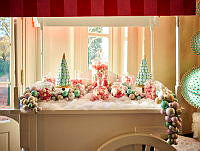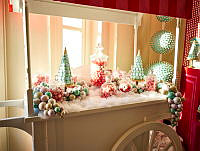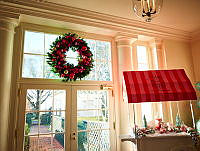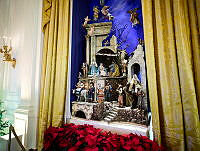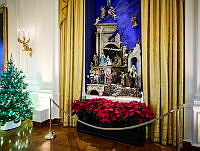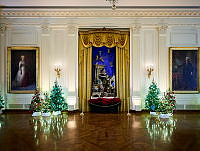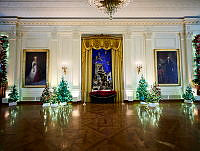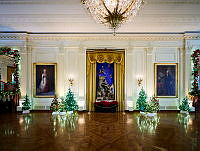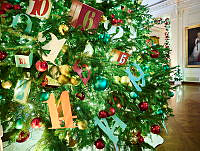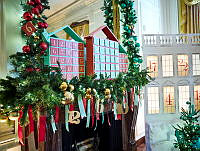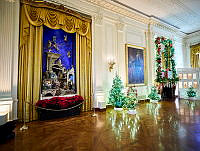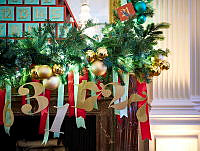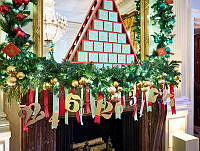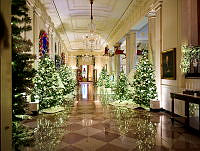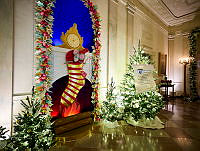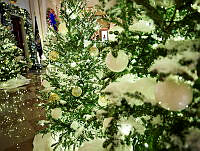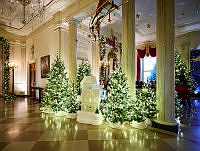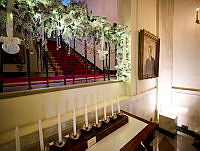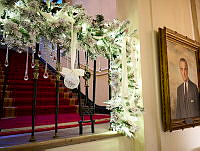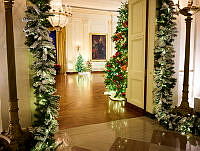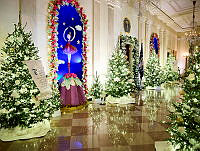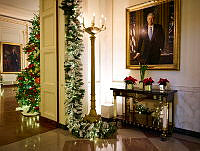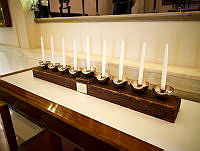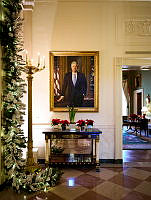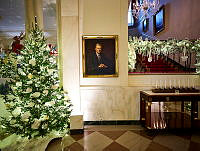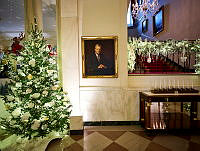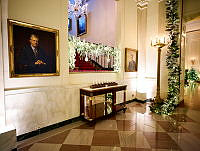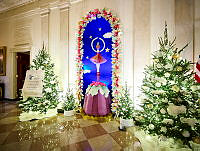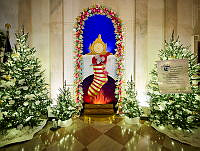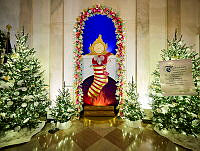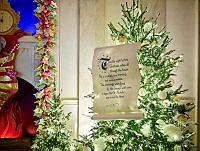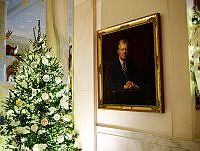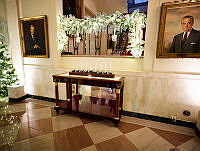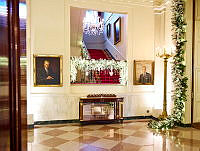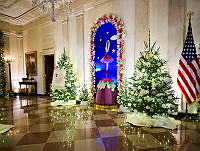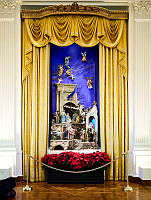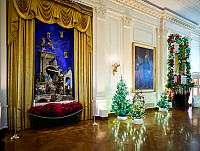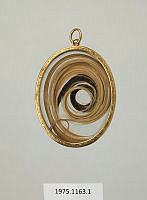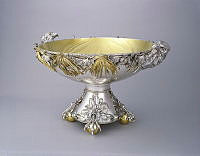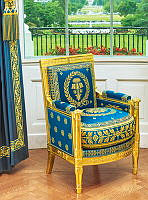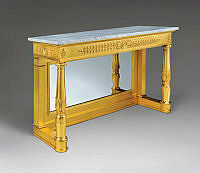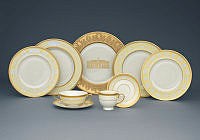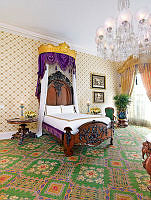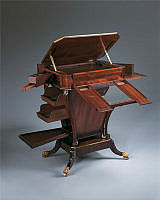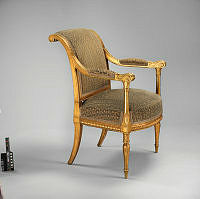An Essay on "The Splendid Mrs. Madison" by Peter Waddell
In the Elliptical Saloon, 1810-1814
Copyright © White House Historical Association. All rights reserved under international copyright conventions. No part of this article may be reproduced or utilized in any form or by any means, electronic or mechanical, including photocopying, recording, or by any information storage and retrieval system, without permission in writing from the publisher. Requests for reprint permissions should be addressed to books@whha.org

Peter Waddell, The Splendid Mrs. Madison, oil on canvas, 48 x 60.
Peter Waddell for the White House Historical AssociationThe most famous hostess in the history of the White House was First Lady Dolley Madison, a lady in whom legend and fact intertwine now, as they often did in her own time. In this painting, the artist shows the principal drawing room of the Madison White House, today's oval Blue Room sometime during the years from 1810 to 1814, when her celebrated drawing rooms or salons were the apex of social life and private politics in Washington.
Elected as a man of action, the soft-spoken James Madison was a distinguished statesman, the principal author of the Constitution, former secretary of state and at last president of the United States. Some years of trouble with Britain had climaxed during his administration with America's declaration of war against England in 1812. Two relatively quiet years passed before Britain defeated Napoleon and was free to turn her military energies to her former colonies. This she did without further delay.
One can imagine the tensions beneath the surface at this White House as the first months of 1814 passed by. The prime purpose of Mrs. Madison's weekly drawing room receptions was to create a forum, where in social association and conversation the two diverse political parties in the Congress might begin to pull together in the crisis. For the drawing rooms Dolley Madison extended matchless hospitality, mixing interesting local people with the often homesick lawmakers from out of town in a warm, elegant setting. She poured red wine and whiskey or rum punch in profusion; the iron stove in the kitchen below was fired up for ham, beef, turtle soup, and crab and the most delicate sweets.
The Madisons took their ideas for the drawing rooms to the White House immediately after his election and the outgoing president, Thomas Jefferson, had to step aside for the architect Benjamin Henry Latrobe and the curtain-maker Mary Sweeney. The result, ironically, was that the room reflected high fashion in London at the time in the latest Grecian taste, as did the women guests, in their filmy Grecian gowns. The room re-created here vanished in flames on the night of August 24, 1814, a casualty of the British invasion, to live again only now in oils on canvas.











